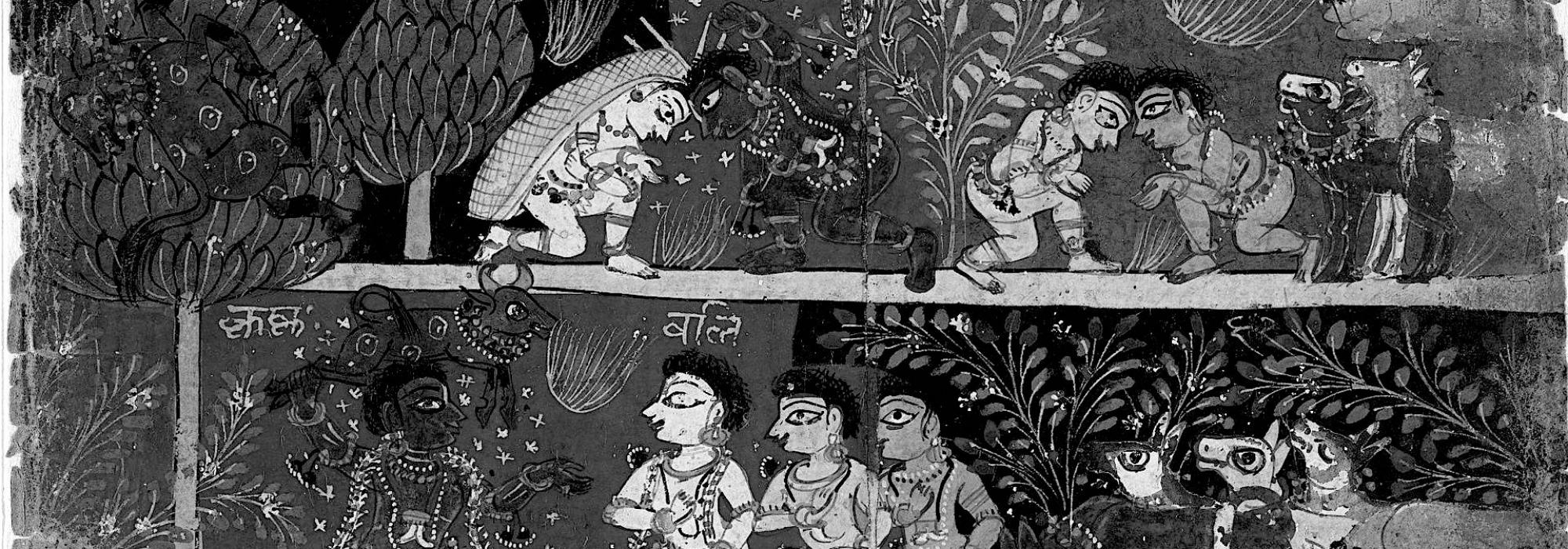The Vishnupurana is important from several perspectives. As mentioned earlier, the five characteristics of Puranas are contained in this Purana. Unlike other Puranas, this does not contain details of Vrata-s. Nor does it contain the glories of tīrthakṣetra-s (places of pilgrimage). The sacred observances in this Purana are entirely in consonance with the Vedas and dharmasūtra-s. Wearing the sacred ash, sacred marks, nāma-s, and other sectarian displays of symbolism and rituals are absent in this work. It does not mention any elaborate details of various Dharmic practices. Owing to these reasons, this Purana is notable for its overall integrity, and has been subjected to the least amount of interpolations. It is true that the Third Amsa of this Purana contains significant details of śrāddha (death ceremonies). Indeed, it is surprising to note that compared to the other topics in this Purana, the śrāddha details are quite extensive. Perhaps, many portions in this section are interpolations.
The linguistic style of the Vishnupurana is charming. The prose passages that are interspersed therein are truly lovely. The other specialty is the extremely limited usage of the ārṣaprayoga (diction and usage of the Vedic Sanskrit style in both prose and poetry). No Puranic episode has been unnecessarily stretched. The stories of Dhruva and Prahlada are enchanting akin to a piece of good poetry. Likewise, the story of Sri Krishna which occurs in the Fifth Amsa qualifies as good poetry.
Parāśara Maharshi narrated this Purana to his disciple, Maitreya. The Purana comprises six Amsa-s, and each Amsa in turn, comprises several chapters. The number of Slokas in the Vishnupurana roughly totals to twenty-three thousand. Sridhara Swami has authored a commentary titled ātmaprakāśa (literally, Light of the Soul). He is the same renowned Vidwan who also wrote commentaries for the Bhagavad Gita and Srimad Bhagavata. He was a great luminary of the Bhakti school. We do not have exact details of Sridhara Swami’s time. One estimate places him in the sixteenth century CE. In his works, he has cited ancient commentators like citsukhayoni and others. We also find another commentary on the Vishnupurana titled viṣṇucittīya. The name of the author remains unknown. In the beginning of this commentary, there is a eulogy of Sri Viṣṇucitta Yati. This enables us to conclude that the work was composed by a disciple of this Yati (monk) and named in the honour of his Guru. Apart from this work, we also have the Vaiṣṇavākūtacaṃdrikā, the critique of Ratnagarbha. Thus, the existence of numerous such commentaries shows the distinction of the Vishnupurana.
We can summarize the contents of the Vishnupurana as follows:
The First Amsa: Story of the creation of the world, which is imbued with twenty-four Elements (Tattva). The story of the creation of the various prajāpati-s (Supreme Being, son of Brahma) devatā-s, pitṛgaṇa-s (group of Divine Ancestors) and marudgaṇa-s (Group of Wind Gods). Stories of Dhruva and Prahlada. The glory of Vishnu.
The Second Amsa: Description of the earth; the nine continental divisions; description of the adholoka (Nether World) and ūrdhvaloka (Upper World); description of the Solar Wheel and the Nine planets; episode of Jaḍabharata and ṛbhu and nidhāghara.
The Third Amsa: Description of the Sons of Manu; the different Vyasas who appear in each of the Four Yugas; the Dharma of the Four Varnas; customs of the brahmacarya (Celibate) and gṛhastha (householder) Ashramas, and elaborate injunctions of Sastras for each.
The Fourth Amsa: Lineages of Vaivasvata Manu, and ikṣvāku with a brief exposition of Sri Rama’s story; lineages of Soma, Yadu, and Kuru; mention of the Kings who would rule Bharatavarsha in the future; lineage of the māgadhā-s; Kings of the Kali Yuga and description of the Kali Dharma.
The Fifth Amsa: Detailed narration of the story of Sri Krishna; the destruction of the Yadava lineage; coronation of King Parikshit; description of the ascent of the Pandavas to Heaven.
The Sixth Amsa: Description of the Kali Dharma; importance of śūdra-s and women; exposition on the concept of Time; description of the naimittika praḻaya (periodic dissolution of the world) and prākṛta praḻaya (comprehensive destruction of all the Worlds); the Ultimate Form of the Bhagavan; Brahmayoga; succession of the disciples of Rishis; epilogue.
Parashara Maharshi states that the Vishnupurana is entirely consonant with the Veda: etatte yanmayākhyātaṃ purāṇaṃ vedasammatam (6.8.12). From this it is clear that the topics contained in the Vedas are discussed in this Purana. For example: nāho na rātrirnabho na bhūmi: nāsīttamo jyotirabhūcca nānyat (1.2.23). This Sloka is a magnification of the Rg-Vedic nāsadīya sūkta, which avers, nāsadāsīt no sadāsīt. Other Slokas such as sahasraśīrṣā puruṣaḥ sahasrākṣaḥ sahasrapāt (1.12.58 thru 65) are explanations for the famous puruṣa suktam. Likewise, we also notice the expositions of the meanings of the Upanishads and Bhagavad Gita in several sections. Apart from similarity in meaning between the Vishnupurana and Vedas and Bhagavad Gita, we also observe linguistic similarity. Overall, it is undoubted that the Vishnupurana was highly renowned and extraordinarily popular from really ancient times. We can also conclude that Mahakavi Kalidasa had thoroughly studied the Vishnupurana and was deeply influenced by it. There is a close match in the description of the Kings of the ikṣvāku lineage found in Kalidasa’s epic poem, Raghuvamsa with that found in the Vishnupurana. Describing the King Raghu, Kalidasa says, rājā prakṛtiraṃjanāt (4.12). This Kalidasan etymological derivation of the word rājā, meaning, “one who provides delight to his citizens,” is found in the Vishnupurana: rājā bhūjjanaraṃjanāt (1.13.93). In the Raghuvamsa, the Rishi Vasiṣṭha describes King Dilīpa’s devoted service of the Divine Cow Nandini as follows:
prasthitāyām pratiṣṭhethāh sthitāyām sthitimācareh |
niṣaṇṇāyām niṣīdāsyām pītāṃbhasi piberapah || (1.89)
The Vishnupurana instructs the method by which the disciple should serve his Guru:
sthite tiṣṭhe vrajedyāte nīcairāsīta cāsati | (3.9.4)
When we notice such comparisons, it is clear that Kalidasa was indeed influenced by the Vishnupurana.
To be continued














































